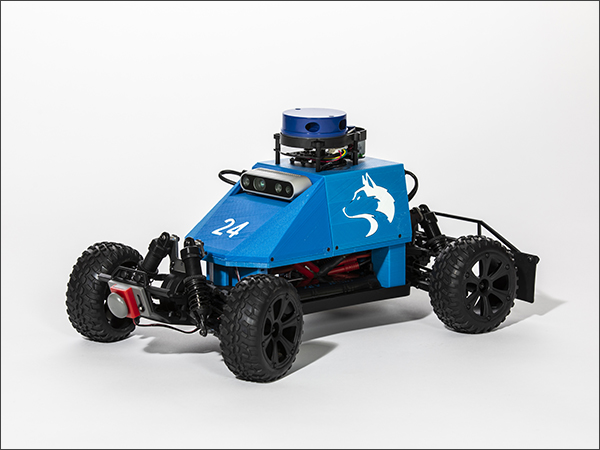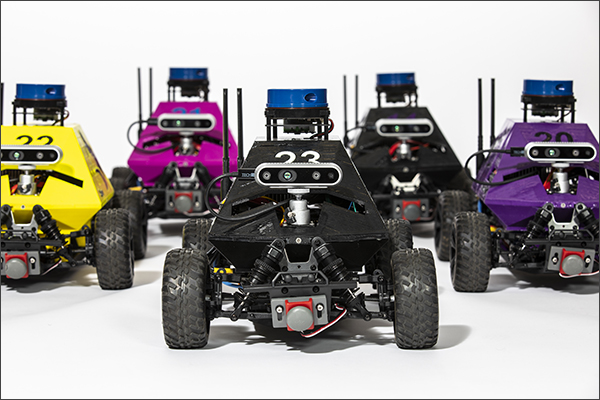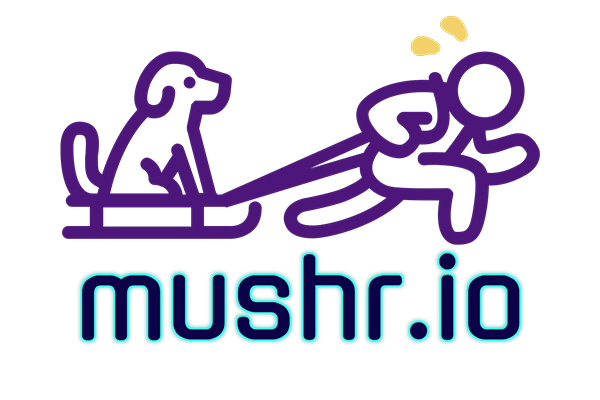
The race is on to cultivate new capabilities and talent in robotics and artificial intelligence, but the high barrier to entry for many research platforms means many would-be innovators could be left behind. Now, thanks to a team of researchers in the Personal Robotics Laboratory at the University of Washington’s Paul G. Allen School of Computer Science & Engineering, expert and aspiring roboticists alike can build a fully functional, robotic race car with advanced sensing and computational capabilities at a fraction of the cost of existing platforms. MuSHR — short for Multi-agent System for non-Holonomic Racing — provides researchers, educators, students, hobbyists, and hackers a vehicle to advance the state of the art, learn about robotic principles, and experiment with capabilities that are normally reserved for high-end laboratories.
“There are many tough, open challenges in robotics, such as those surrounding autonomous vehicles, for which MuSHR could be the ideal test platform,” said lab director Siddhartha Srinivasa, a professor in the Allen School. “But beyond research, we also need to think about how we prepare the next generation of scientists and engineers for an AI-driven future. MuSHR can help us answer that challenge, as well, by lowering the barrier for exploration and innovation in the classroom as well as the lab.”
MuSHR is an open-source, full-stack system for building a robotic race car using off-the-shelf and 3D-printed parts. The website contains all of the information needed to assemble a MuSHR vehicle from scratch, including a detailed list of materials, ready-to-use files for 3D-printing portions of the race-car frame, step-by-step assembly instructions and video tutorials, and the software to make the car operational.
More complex, research-oriented robot navigation systems, such as the Georgia Tech AutoRally, cost upwards of $10,000. The more budget-friendly MIT RACECAR, the original do-it-yourself platform that inspired the UW team’s project, costs $2,600 with basic sensing capabilities. By contrast, a low-end MuSHR race car with no sensing can be assembled for as little as $610, and a high-end car equipped with a multitude of sensors can be built for around $930.
“We were able to achieve a dramatic cost reduction by using low-cost components that, when tested under MuSHR’s use cases, do not have a significant impact on system performance compared to other, more costly systems,” noted Allen School Ph.D. student Patrick Lancaster. But don’t be fooled by the relatively modest price; what’s under the hood will appeal to even seasoned researchers, as the high-end setup may be used to support even advanced research projects.
“Most robotic systems available today fall into one of two categories: either simple, educational platforms that are low-cost but also low-functionality, or more robust, research-oriented platforms that are prohibitively expensive and complex to use,” explained Allen School master’s student Johan Michalove, one of the developers of the project. “MuSHR combines the best of both worlds, offering high functionality at an affordable price. It is comprehensive enough for professional research, but also accessible enough for classroom or individual use.”
MuSHR comes with a set of computational modules that enable intelligent decision making, including a software and sensor package that enables localization in a known environment, and a controller for navigating towards a goal while avoiding collisions with other objects in its path. Users can build upon these preliminary AI capabilities to develop more advanced perception and control algorithms. The name “MuSHR” was inspired by the UW’s mascot, the Huskies, because it calls to mind the mushing of a dogsled at top speed. As it happens, a MuSHR race car would outpace the dogs, achieving speeds in excess of 15 miles per hour — useful for researchers working to solve critical challenges in autonomous vehicle systems, such as high-speed collision avoidance, to make them viable for real-world use.
For students with a similar need for speed, MuSHR offers an opportunity to learn about the challenges of autonomous systems in a hands-on way. Allen School Ph.D. student and MuSHR project lead Matthew Schmittle worked with students to put the platform through its paces in the school’s Mobile Robotics course this past spring, in which 41 undergraduates used MuSHR to build a complete mobile robotic system while grappling with some of the same challenges as more seasoned researchers at the likes of Tesla, Uber, and Google.
“MuSHR introduces students to key concepts such as localization, planning, and control,” Schmittle, who served as a teaching assistant for the course, explained. “The course culminated in a demo day, where students had a chance to show how well they implemented these concepts by using their MuSHR cars to navigate a wayfinding course. We hope classrooms around the country will take advantage of MuSHR to engage more students to the exciting world of robotics and AI.”
So far, the MuSHR platform has featured in two undergraduate and two graduate-level courses at the UW. Nearly 130 students have had the opportunity to explore robotic principles using MuSHR, and the Allen School plans to offer similar classes in the future.

“As a roboticist, I find MuSHR’s platform for rapid testing and refinement to be an enticing prospect for future research,” Srinivasa said. “As an educator, I am excited to see how access to MuSHR will spark students’ and teachers’ imaginations. And let’s not forget the hobbyists and hackers out there. We’re looking forward to seeing the various ways people use MuSHR and what new capabilities emerge as a result.”
Individuals who are interested in building their own MuSHR robotic race car can download the code and schematics, and view tutorials on the MuSHR website. Educators who are interested in incorporating the MuSHR platform into their classes can email the team at mushr@cs.washington.edu to request access to teaching materials, including assignments and solutions. The team will also provide a small number of pre-built MuSHR cars to interested parties who would otherwise not have the financial means to build the cars themselves, with priority given to schools, groups, and labs whose members are underrepresented in robotics. Interested individuals or labs are encouraged to submit an application by filling out this form.
MuSHR is a work in progress, and the version released today is the lab’s third iteration of the platform. The team plans to continue refining MuSHR while employing it in a variety of research projects at the UW. In addition to Srinivasa, Michalove, Schmittle, and Lancaster, members of the MuSHR team include professor Joshua R. Smith, who holds a joint appointment in the Allen School and Department of Electrical & Computer Engineering; fifth-year master’s students Matthew Rockett and Colin Summers; postdocs Sanjiban Choudhury, Christoforos Mavrogiannis, and Allen School Ph.D. alumna and current postdoc Fereshteh Sadeghi.
The MuSHR project was undertaken with support from the Allen School; the Honda Research Institute; and Intel, who contributed the Realsense on-board cameras used in the construction of the vehicles.
Read coverage of MuSHR in GeekWire here.


